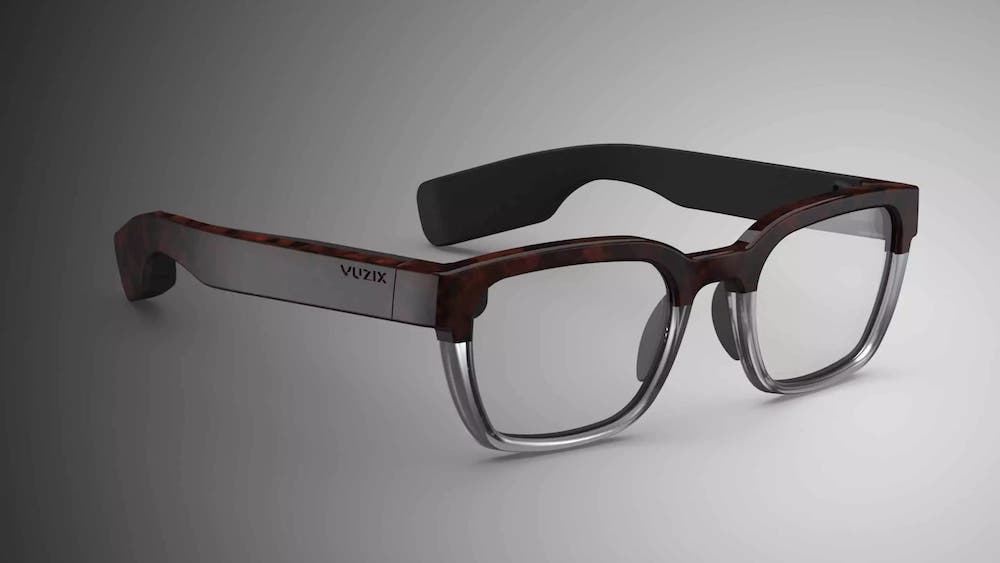Welcome back to AWE Talks, our series that revisits the best of AWE’s conference sessions. With AWE USA 2024 recently concluded, we have a fresh batch of footage to keep us busy for weeks to come.
We continue the action this week with a perennial topic: the evolutionary path towards the AR glasses holy grail. What are challenges and considerations? How long and in what form will AR glasses arrive in earnest?
See the summarized takeaways below, along with the full session video. Stay tuned for more video highlights each week and check out the full library of AWE USA 2024 sessions on AWE’s YouTube Channel.
Speakers
Jason McDowall
Jeri Ellsworth
Adi Robertson
Edward Tang
Karl M Guttag
– The last few years have brought a sobering realization to the broader XR sector.
– After much future-gazing for ubiquitous AR glasses, technical realities caught up.
– Those realities include requirements for robust graphical AR, such as heat & bulk.
– The result is a tradeoff of sleek & optically-underpowered versus bulky & UX-rich.
– That spectrum today is represented by Apple Vision Pro versus Ray-Ban Meta.
– Somewhere in the middle is XReal Air 2 with a focused use case for video & gaming.
– The question is which mode is best? And when will we get both style and substance?
– On the first question, there's no one answer as purpose-built approaches are valid.
– In fact, we'll see more application-specific devices versus "kitchen-sink" approaches.
– That said, passthrough AR a la Vision Pro could be a dead-end evolutionary path.
– Though it's valid and valuable today, it will never be the endgame for headworn AR.
– That's simply because optical AR is a superior modality... albeit challenged today.
– Within optical AR, there are formats ranging from OLED to laserbeam scanning.
– OLED may not be bright enough while micro-LED isn't ready for prime time.
– Laserbeam scanning meanwhile has lots of detractors for its fragility & fussiness.
– LCOS (liquid crystal on silicon) has meanwhile inched ahead with some consensus.
– Stepping back beyond the technicalities, there are important practical factors.
– For example, are usability and use cases attractive to users at the end of the day?
– That's arguably the case with Ray-Ban Meta Smartglasses... without a display.
– Bottom line: if users like it, they're willing to look past friction and "all the warts."
– AR hardware has rarely achieved that yet, but there's ample momentum in the air.
– Meanwhile, where will innovation and acceleration come from? A tech-giant Superman?
– More innovation and agility can come from smaller players like Tilt Five.
– One benefit that tech giants do possess is vertical integration with other products.
– That's of course where Apple shines, given continuity and various wearables integrations.
– Apple has another ace: the combination of a privacy-friendly play and AI.
– AR glasses will be AI-dependent for personalization features... which is a privacy minefield.
– But Apple can pull this off with ample first-party data and a non-fragmented ecosystem.
– That may be the wild card that no one is talking about for the ultimate competitive edge...
For more color, see the full video below...

Want more XR insights and multimedia? ARtillery Intelligence offers an indexed and searchable library of XR intelligence known as ARtillery Pro. See more here.
Speakers
Jason McDowall
Jeri Ellsworth
Adi Robertson
Edward Tang
Karl M Guttag
– The last few years have brought a sobering realization to the broader XR sector.
– After much future-gazing for ubiquitous AR glasses, technical realities caught up.
– Those realities include requirements for robust graphical AR, such as heat & bulk.
– The result is a tradeoff of sleek & optically-underpowered versus bulky & UX-rich.
– That spectrum today is represented by Apple Vision Pro versus Ray-Ban Meta.
– Somewhere in the middle is XReal Air 2 with a focused use case for video & gaming.
– The question is which mode is best? And when will we get both style and substance?
– On the first question, there's no one answer as purpose-built approaches are valid.
– In fact, we'll see more application-specific devices versus "kitchen-sink" approaches.
– That said, passthrough AR a la Vision Pro could be a dead-end evolutionary path.
– Though it's valid and valuable today, it will never be the endgame for headworn AR.
– That's simply because optical AR is a superior modality... albeit challenged today.
– Within optical AR, there are formats ranging from OLED to laserbeam scanning.
– OLED may not be bright enough while micro-LED isn't ready for prime time.
– Laserbeam scanning meanwhile has lots of detractors for its fragility & fussiness.
– LCOS (liquid crystal on silicon) has meanwhile inched ahead with some consensus.
– Stepping back beyond the technicalities, there are important practical factors.
– For example, are usability and use cases attractive to users at the end of the day?
– That's arguably the case with Ray-Ban Meta Smartglasses... without a display.
– Bottom line: if users like it, they're willing to look past friction and "all the warts."
– AR hardware has rarely achieved that yet, but there's ample momentum in the air.
– Meanwhile, where will innovation and acceleration come from? A tech-giant Superman?
– More innovation and agility can come from smaller players like Tilt Five.
– One benefit that tech giants do possess is vertical integration with other products.
– That's of course where Apple shines, given continuity and various wearables integrations.
– Apple has another ace: the combination of a privacy-friendly play and AI.
– AR glasses will be AI-dependent for personalization features... which is a privacy minefield.
– But Apple can pull this off with ample first-party data and a non-fragmented ecosystem.
– That may be the wild card that no one is talking about for the ultimate competitive edge...
For more color, see the full video below...
Want more XR insights and multimedia? ARtillery Intelligence offers an indexed and searchable library of XR intelligence known as ARtillery Pro. See more here.



